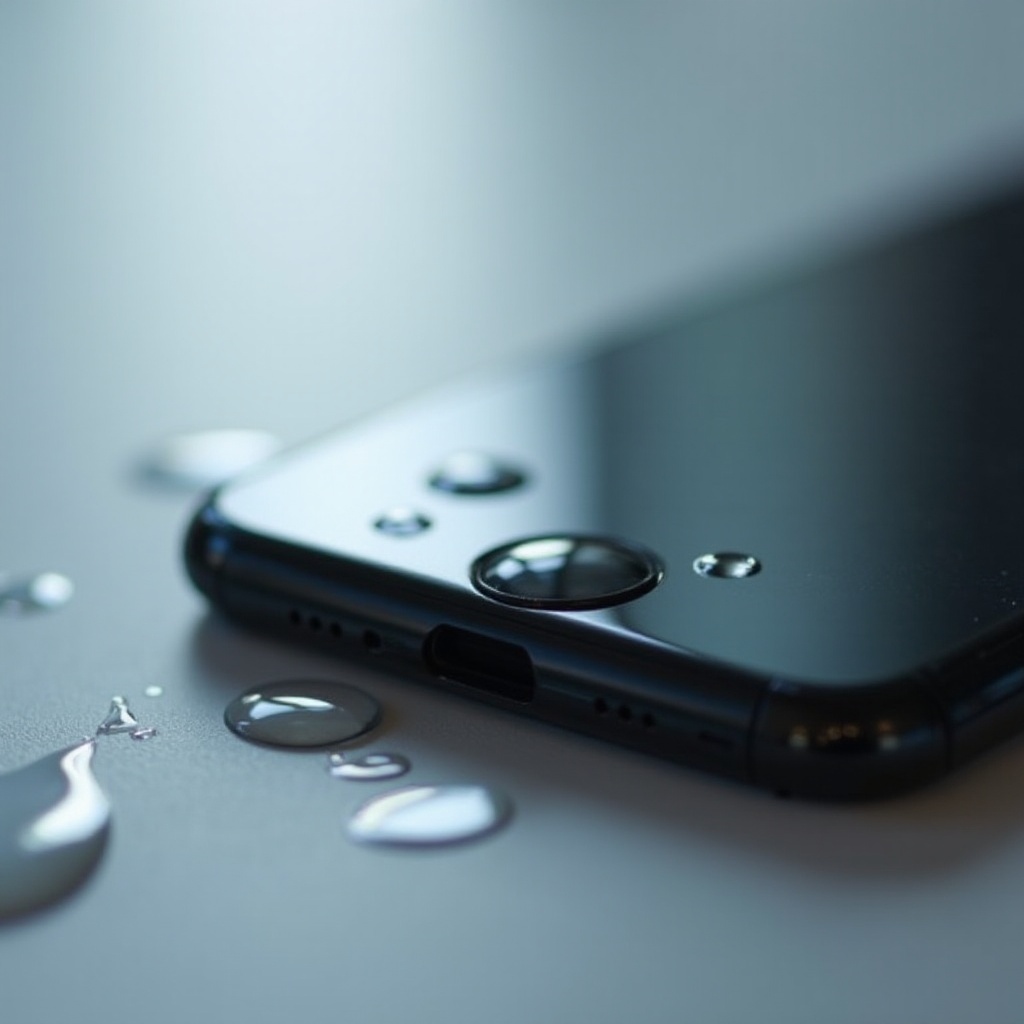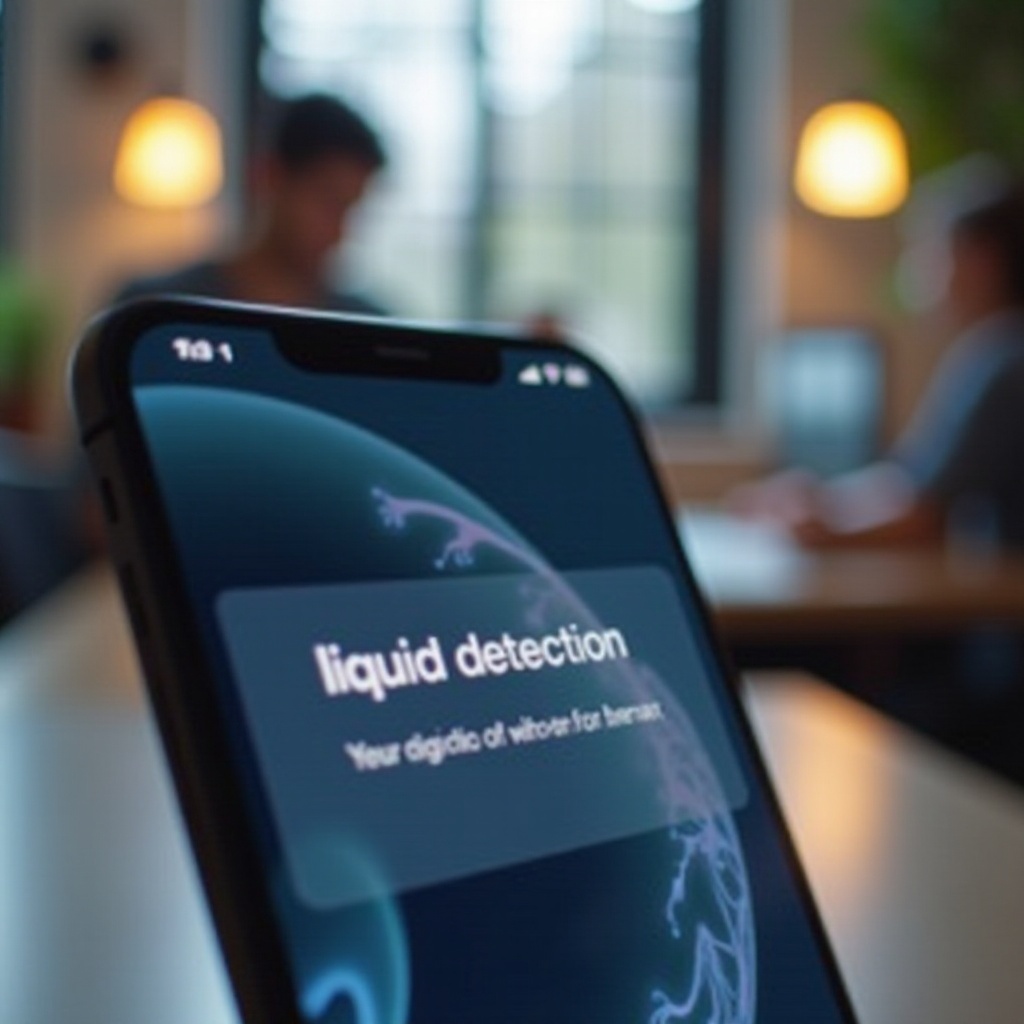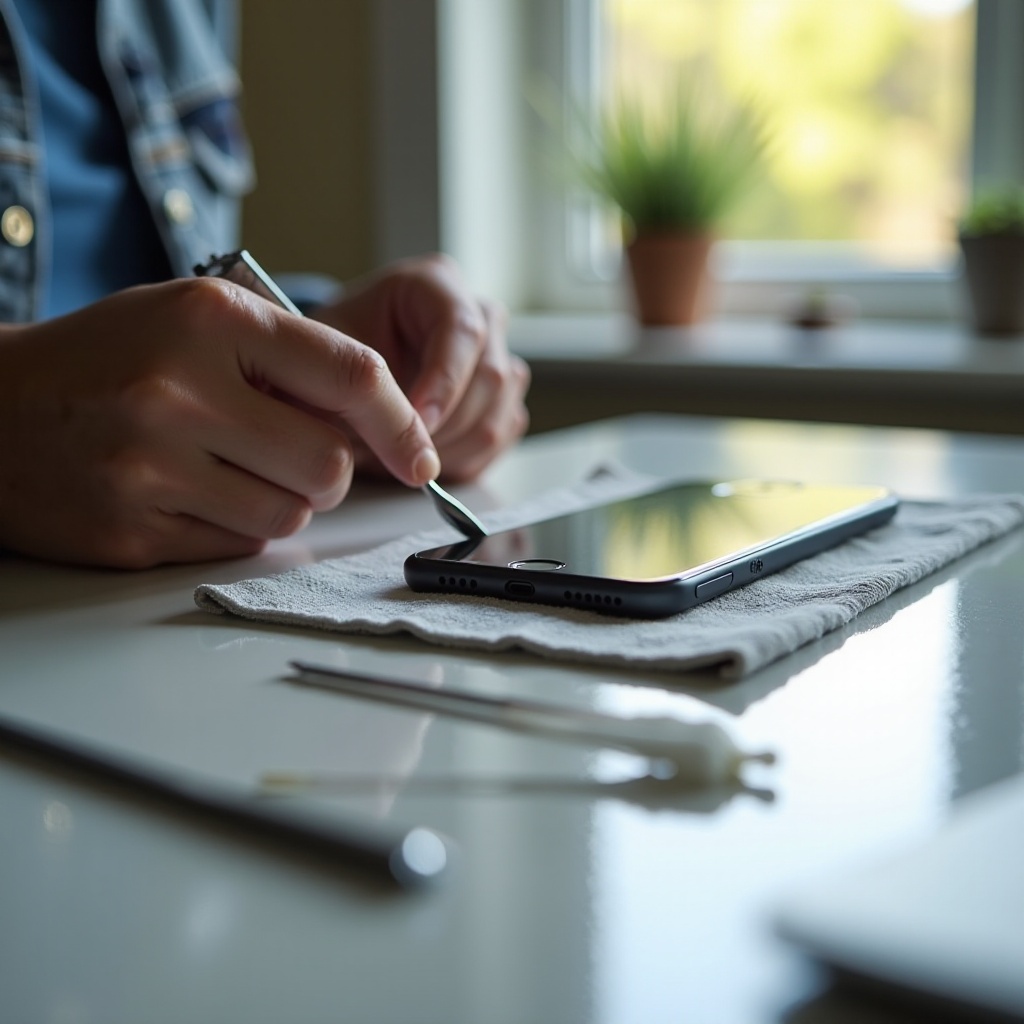Introduction
Facing a liquid detection alert on your iPhone can be a nerve-wracking experience. Given how much we rely on our phones, it’s only natural to feel a sense of urgency. The purpose of this guide is to assist you in taking the right steps when you see the alert that moisture has been detected in your iPhone. By acting swiftly and following these steps, you can potentially save your device from irreversible damage.

Understanding Liquid Detection Alerts
The first step towards dealing with a liquid detection alert is understanding what it means. iPhones are equipped with liquid contact indicators (LCIs) that trigger alerts when moisture is present. This is a built-in safety feature to warn users about potential issues. These alerts generally suggest that moisture has come into contact with your iPhone’s internal components, which can cause significant damage like corrosion or short-circuiting if not addressed quickly. Understanding the purpose and operation of these alerts helps you take the necessary steps to protect your device.

Immediate Actions to Take
Should you find yourself facing a liquid detection alert, immediate action is key. Acting swiftly can often make the difference between a damaged device and a fully functional one.
Powering Off the Device
- As soon as you receive the alert, power off your iPhone. This minimizes the risk of short-circuiting and gives you peace of mind that your device is not operating while wet.
Removing Accessories and Cases
- Disconnect all accessories, including cases, cables, and headphones. These can trap moisture and make the situation worse.
Checking for Visible Moisture
- Examine your iPhone for visible signs of moisture. Gently wipe the surface with a dry, soft cloth to remove as much external liquid as possible.
These immediate actions set the groundwork for subsequent drying procedures and help minimize additional risk to your device.
Safe Methods for Drying Your iPhone
Following the initial steps, it is critical to properly dry your device to prevent any lingering moisture from causing damage.
Air Drying Techniques
- Place your iPhone in a well-ventilated area, standing it upright on a soft towel. This encourages airflow through the charging port and speaker grilles, allowing for efficient drying.
- Make use of a fan to circulate air around the device, expediting the drying process.
Using Absorbent Materials
- For extra moisture wicking, place your iPhone in a sealed container with silica gel packets. These packets are highly effective at absorbing moisture from the environment without causing damage to your phone.
Avoiding Harmful Methods
- Refrain from using a hairdryer or any direct heat source as this can lead to internal damage.
- Avoid placing your device in rice. Not only is it less effective, but small grains can also make their way into ports.
Applying these drying techniques increases the likelihood of fully restoring your device’s functionality without residual issues.
Assessing iPhone Functionality Post-Drying
After the drying process, it’s important to check whether your iPhone is functioning properly. This will help determine the next steps.
Testing for Damage
- Power your device back on and assess its functionality by testing the touchscreen, speakers, and charging ability. Look out for any irregularities that might indicate damage.
When to Seek Professional Repair
- Should any persistent issues remain, it’s advisable to consult an official Apple service provider. They have the expertise to identify internal damage and carry out repairs or recommend a replacement.
Regular checks ensure your iPhone continues to operate smoothly and any damage is swiftly dealt with by professionals.

Preventive Measures for Avoiding Liquid Damage
Taking preventive steps can significantly reduce the risk of future liquid damage to your iPhone.
Investing in Water-Resistant Accessories
- Consider waterproof cases and screen protectors. These are easily accessible and can prevent a range of water-related mishaps.
Regular Device Maintenance
- Regularly clean ports and connectors to prevent dirt accumulation, which can trap moisture and compromise device integrity.
Emphasizing prevention not only protects your current device but fortifies it against potential hazards in the future.
Conclusion
In conclusion, quick and informed actions are essential when faced with a liquid detection alert on your iPhone. By powering off the device, disconnecting accessories, and employing proven drying techniques, you stand a better chance of avoiding long-term damage. Should issues persist, seeking professional advice is strongly recommended. Additionally, investing in preventive methods can secure your device from further incidents, maintaining its performance and longevity.
Frequently Asked Questions
What should I do if my iPhone doesn’t turn on after drying?
If your iPhone remains non-responsive, consult with an authorized repair service. They can diagnose potential water damage and suggest appropriate solutions.
Is using rice an effective method to dry my iPhone?
Contrary to popular belief, rice is less effective than silica gel packets for moisture absorption, and rice grains can damage your phone’s ports.
How do I know if I need to replace my iPhone after water damage?
Consider replacement if your iPhone exhibits severe or persistent malfunctions even after professional repair, as it may indicate irreversible damage.